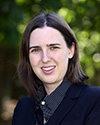Program Description
Autism, also known as autism spectrum disorder (ASD), is a broad range of complex conditions affecting communication and behavior, usually appearing by age 2. Research shows that both genetics and environmental factors likely play a role. Once considered rare, the Centers for Disease Control and Prevention estimates that autism affects about 1 in 54 children in the United States.
Symptoms include difficulties in social communication as well as restricted patterns of behavior and interests. Some individuals diagnosed with autism are mildly affected while others are more severely impaired. Medical conditions, such as epilepsy, sleep disturbances, and gastrointestinal problems, often occur with autism. Autism and its co-occurring conditions create considerable challenges for affected people and their families. New and improved diagnosis methods, treatments, and services across the lifespan are needed. Increased funding and greater coordination among federal agencies facilitate autism research progress. The NIEHS research program attracts talented scientists from toxicology, epidemiology, and other areas, and the investment is yielding important new discoveries that may help prevent the disorder.
What NIEHS is Doing
NIEHS supports research aimed at understanding how environmental exposures early in life may combine with genetic susceptibility to alter brain development. Researchers use new ways to measure prenatal exposures, screen for contaminants, and understand how environmental factors interact with genes in ways that may lead to autism.
NIEHS grantees are discovering how air pollution, prenatal conditions, and inflammation may increase autism risk. A wide variety of environmental exposures are investigated, including diet and nutrition, pesticides, metals, medications, and medical procedures. Many NIEHS research efforts address priorities identified in the Interagency Autism Coordinating Committee's Strategic Plan for Autism Research.
NIEHS-funded scientists work to better understand the environmental contributors to ASD through their continued work on these ongoing, large-scale studies: Childhood Autism Risk from Genetics and the Environment (CHARGE) study, the Markers of Autism Risk in Babies - Learning Early Signs (MARBLES) study, and The Early Autism Risk Longitudinal Investigation (EARLI) study.
CHARGE, with more than 1,800 children enrolled, seeks to clarify the roles of genetics and environmental exposures in autism. Results indicate a variety of exposures may be associated with increased risk, including pesticides, air pollution, and maternal metabolic or immune conditions.
MARBLES, with more than 400 mother-child pairs, uniquely obtains information about how exposures before, during, and after pregnancy may contribute to autism. Recent research explores the effect that prenatal exposure to phthalates and prenatal vitamins may have on autism development.18
EARLI enrolled a large group of pregnant mothers of children with autism. It follows each newborn child – the sibling to the child with ASD – through 3 years of age to see if he or she was diagnosed with ASD. The EARLI study continues to follow the children and examine possible environmental risk factors for autism and possible links between genes and the environment, known as gene-environment interactions.
Identifying environmental factors that increase a child’s chance of developing autism is essential to developing public health efforts for reducing or preventing exposure to those factors.
For additional information on NIEHS grantees, visit our Who We Fund tool for grants related to autism spectrum disorders.
Learn more about environmental factors that may be associated with autism in the Health and Education section.
Program Lead
-

-
Cindy Lawler, Ph.D.
Branch Chief, Genes, Environment, and Health -
Tel 984-287-3280
lawler@niehs.nih.gov -
P.O. Box 12233Mail Drop K3-15Durham, N.C. 27709
Additional Program Contacts
-

-
Amanda E. Garton
Health Specialist -
Tel 984-287-3260
amanda.garton@nih.gov
-

-
Astrid C. Haugen
Health Specialist -
Tel 984-287-3266
haugen@niehs.nih.gov
to Top


